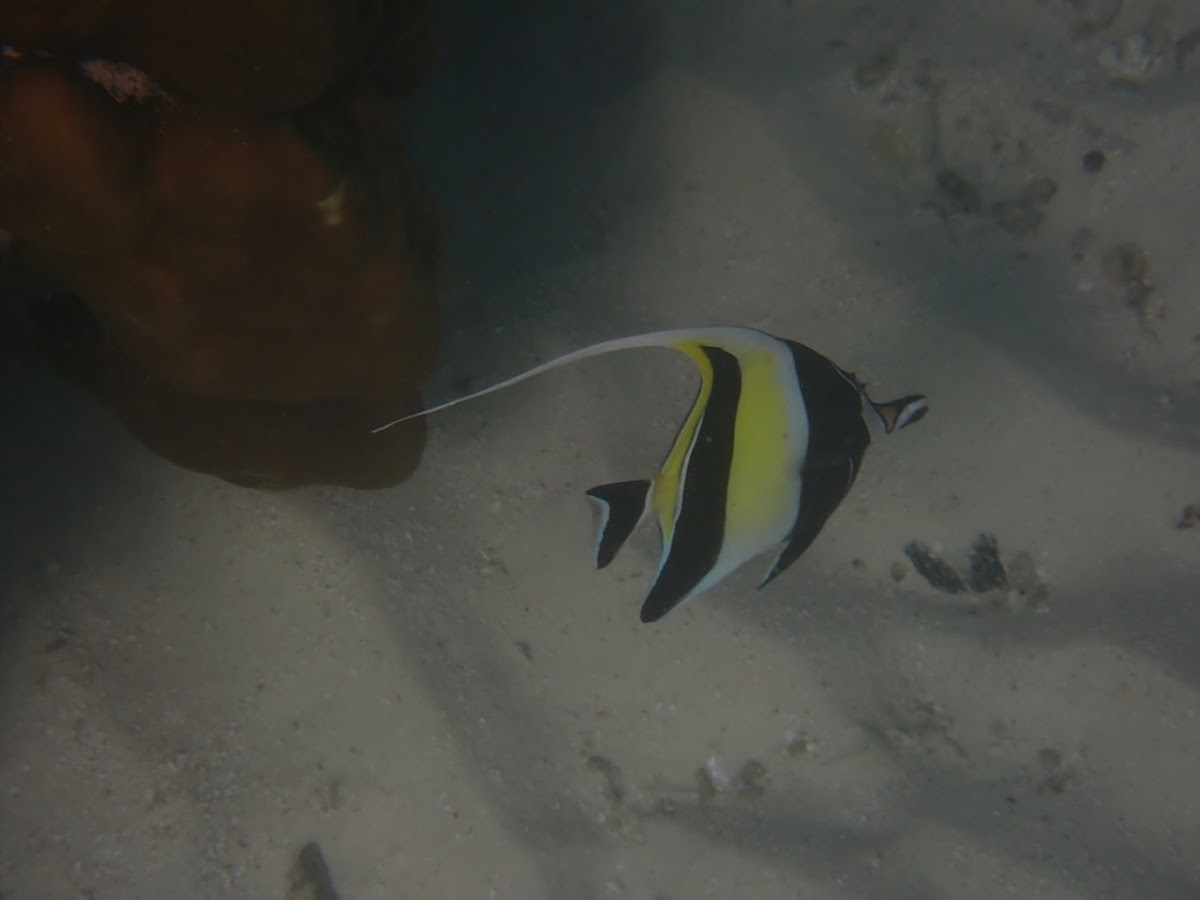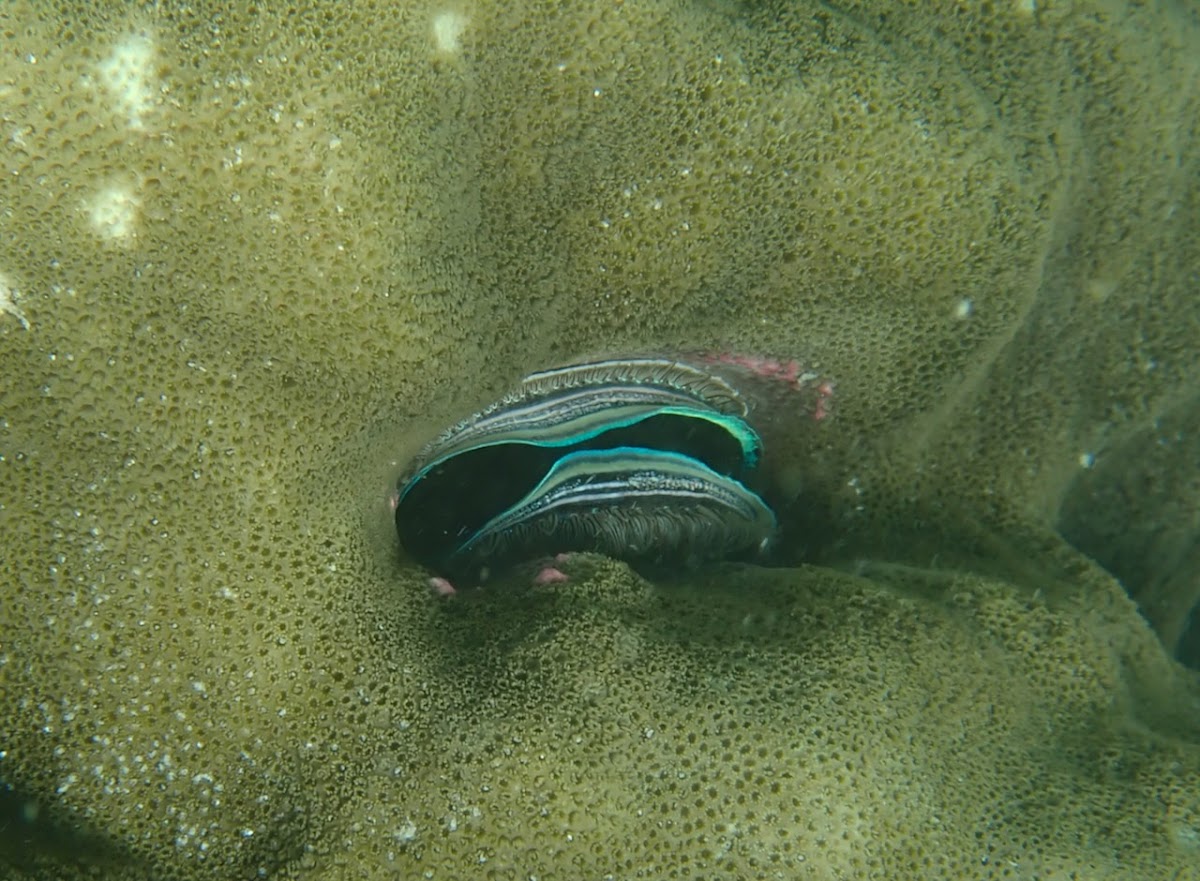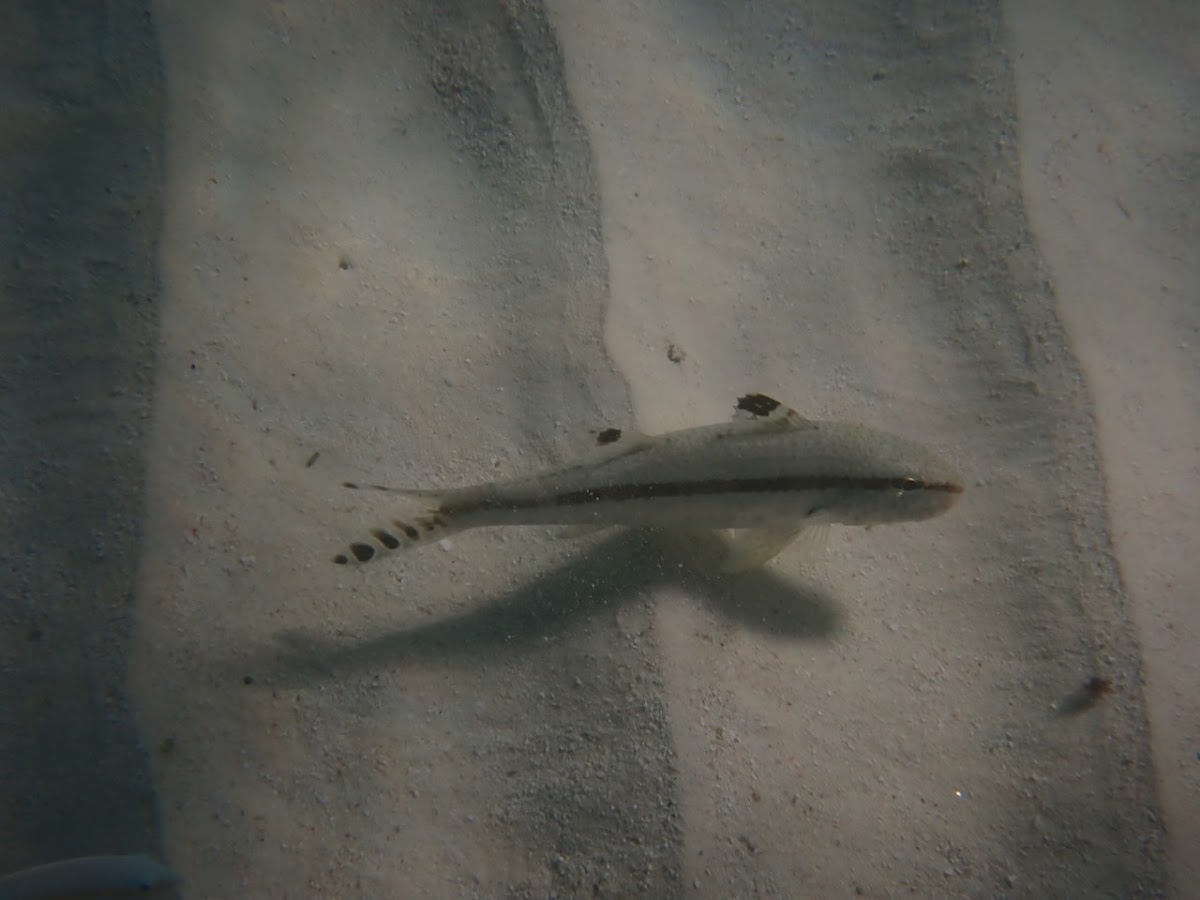On the other side of the rock, on the South side, there was the "official" hotel beach, where most of the hotel guests were. While it was pretty and also shady, it was too crowded to our taste.
and Banded sea krait (Laticauda colubrina).
I found this pretty blenny near the island, it has most beautiful and elaborate eyebrows, which are actually called cirri. The cirri are also an unmistakeable sign that it is a blenny and not a goby. But even after browsing through several hundreds of photos of blennies I am still not sure which it is. Update: I found it! It is the Jewelled blenny or Lawnmower blenny (Salarias fasciatus).
This unusual fish we know already from Maledives - it is a Blackeye thicklip wrasse (Hemigymnus melapterus).
These guys were just casually sitting around on rocks with the smug look on their faces, they are the Speckled sandperches (Parapercis hexophthalma).
We saw several nudibranch Phyllidia Varicosa around the island as well.
There were plenty of all kinds of fish there, like the Pearly spinecheek (Scolopsis margaritifer)...
...and Blackspotted pufferfis (Arothron nigropunctatus), this time a bit darker than usual.
This Diadema sea urchin was particularly pretty, usually they are black or white or have bunches of all black and all white spines, but this one has black and white stripes on every spine.
The Indian tube worm (Sabellastarte indica) was very similar to tubeworms we saw elsewhere in the world.
We had to walk over the hill every evening to get to the town. It was a proper jungle up on the hill and I was always looking left and right in hope to see some interesting little creature. We didn't see anything and while we heard plenty of birds we even rarely saw one of them.
The tuktuk is THE transportation means in Thailand, it is used as a taxi to transport tourists, it is used as traveling groceries, or traveling restaurant, it is very versatile.
We saw many cats around and most of them had a bell around their neck. I'm thinking it's probably to protect the birds, but I'm not sure if the bell doesn't prevent them from catching mice either. This one was very focused on an insect and didn't want to smile into my camera.
We usually went to the town early in the evening, before 6, when there was still some light and not too many people were on the street yet. So we could freely choose our restaurant for dinner, lots of good ones got full later in the evening and one would need to wait for the table or try the next one.
This restaurant was pretty good - we had a feast of Panang curry with rice, fried Morning glory (the green vegetable, also known as Chinese water spinach), green papaya salad and grilled snapper with sides - glass noodles, veggies, Thai basil and prik nam pla (chilly and fish sauce) sauce. And when we were leaving people were waiting outside to get a table.
This beautiful Heliconia was growing next to the path leading to our bungalow.






















































